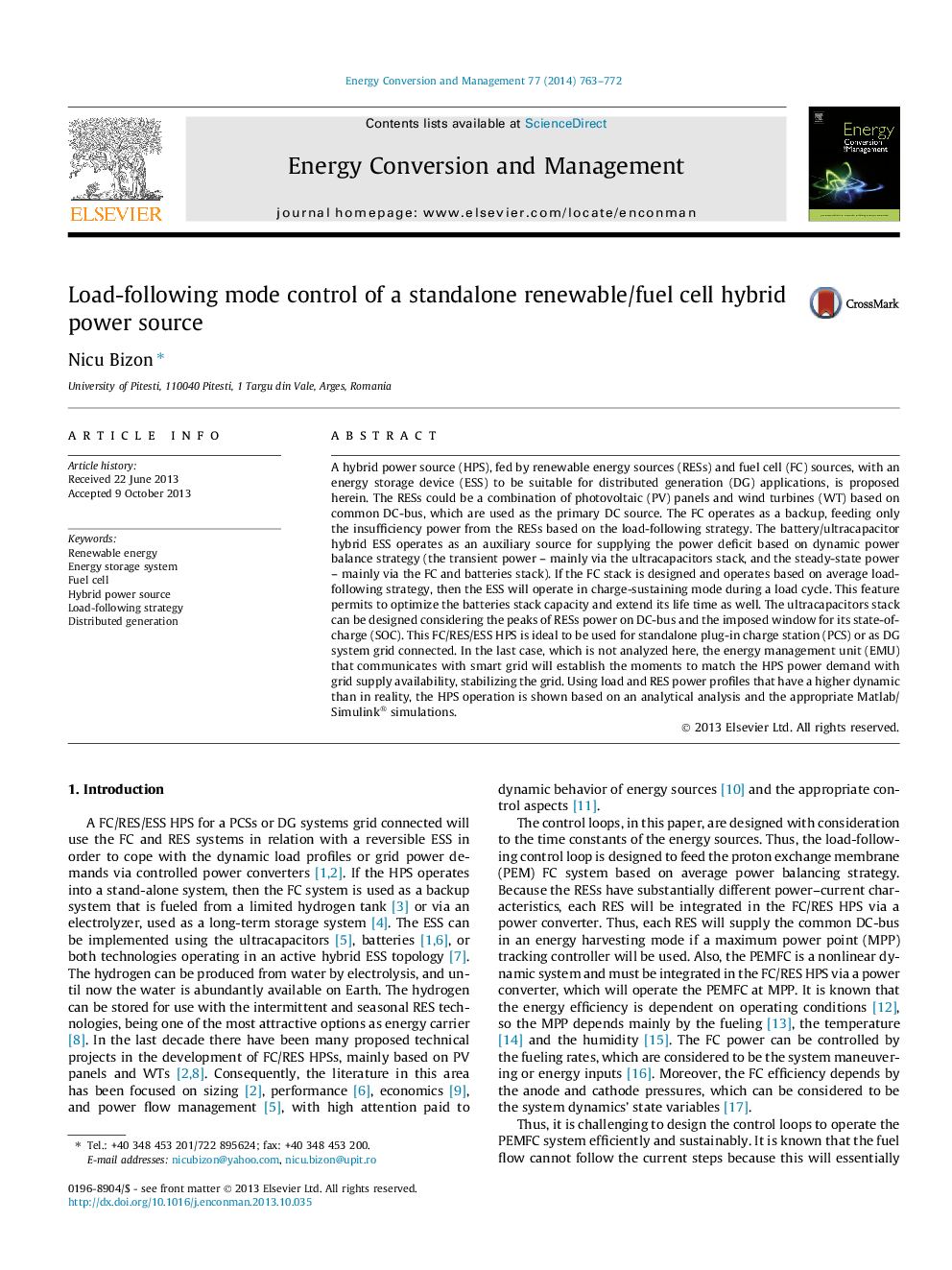| Article ID | Journal | Published Year | Pages | File Type |
|---|---|---|---|---|
| 7166029 | Energy Conversion and Management | 2014 | 10 Pages |
Abstract
A hybrid power source (HPS), fed by renewable energy sources (RESs) and fuel cell (FC) sources, with an energy storage device (ESS) to be suitable for distributed generation (DG) applications, is proposed herein. The RESs could be a combination of photovoltaic (PV) panels and wind turbines (WT) based on common DC-bus, which are used as the primary DC source. The FC operates as a backup, feeding only the insufficiency power from the RESs based on the load-following strategy. The battery/ultracapacitor hybrid ESS operates as an auxiliary source for supplying the power deficit based on dynamic power balance strategy (the transient power - mainly via the ultracapacitors stack, and the steady-state power - mainly via the FC and batteries stack). If the FC stack is designed and operates based on average load-following strategy, then the ESS will operate in charge-sustaining mode during a load cycle. This feature permits to optimize the batteries stack capacity and extend its life time as well. The ultracapacitors stack can be designed considering the peaks of RESs power on DC-bus and the imposed window for its state-of-charge (SOC). This FC/RES/ESS HPS is ideal to be used for standalone plug-in charge station (PCS) or as DG system grid connected. In the last case, which is not analyzed here, the energy management unit (EMU) that communicates with smart grid will establish the moments to match the HPS power demand with grid supply availability, stabilizing the grid. Using load and RES power profiles that have a higher dynamic than in reality, the HPS operation is shown based on an analytical analysis and the appropriate Matlab/Simulink® simulations.
Related Topics
Physical Sciences and Engineering
Energy
Energy (General)
Authors
Nicu Bizon,
